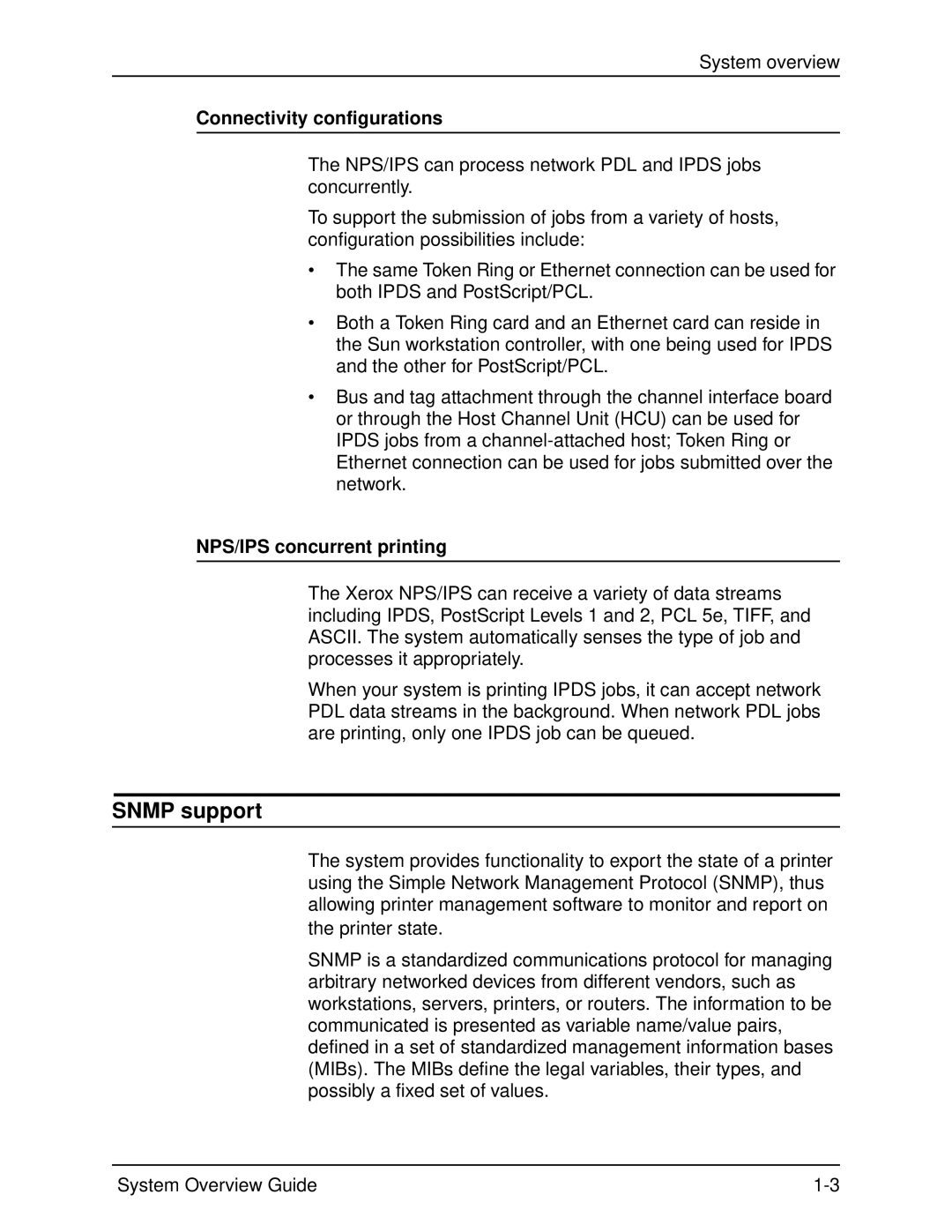
System overview
Connectivity configurations
The NPS/IPS can process network PDL and IPDS jobs concurrently.
To support the submission of jobs from a variety of hosts, configuration possibilities include:
•The same Token Ring or Ethernet connection can be used for both IPDS and PostScript/PCL.
•Both a Token Ring card and an Ethernet card can reside in the Sun workstation controller, with one being used for IPDS and the other for PostScript/PCL.
•Bus and tag attachment through the channel interface board or through the Host Channel Unit (HCU) can be used for IPDS jobs from a
NPS/IPS concurrent printing
The Xerox NPS/IPS can receive a variety of data streams including IPDS, PostScript Levels 1 and 2, PCL 5e, TIFF, and ASCII. The system automatically senses the type of job and processes it appropriately.
When your system is printing IPDS jobs, it can accept network PDL data streams in the background. When network PDL jobs are printing, only one IPDS job can be queued.
SNMP support
The system provides functionality to export the state of a printer using the Simple Network Management Protocol (SNMP), thus allowing printer management software to monitor and report on the printer state.
SNMP is a standardized communications protocol for managing arbitrary networked devices from different vendors, such as workstations, servers, printers, or routers. The information to be communicated is presented as variable name/value pairs, defined in a set of standardized management information bases (MIBs). The MIBs define the legal variables, their types, and possibly a fixed set of values.
System Overview Guide |
